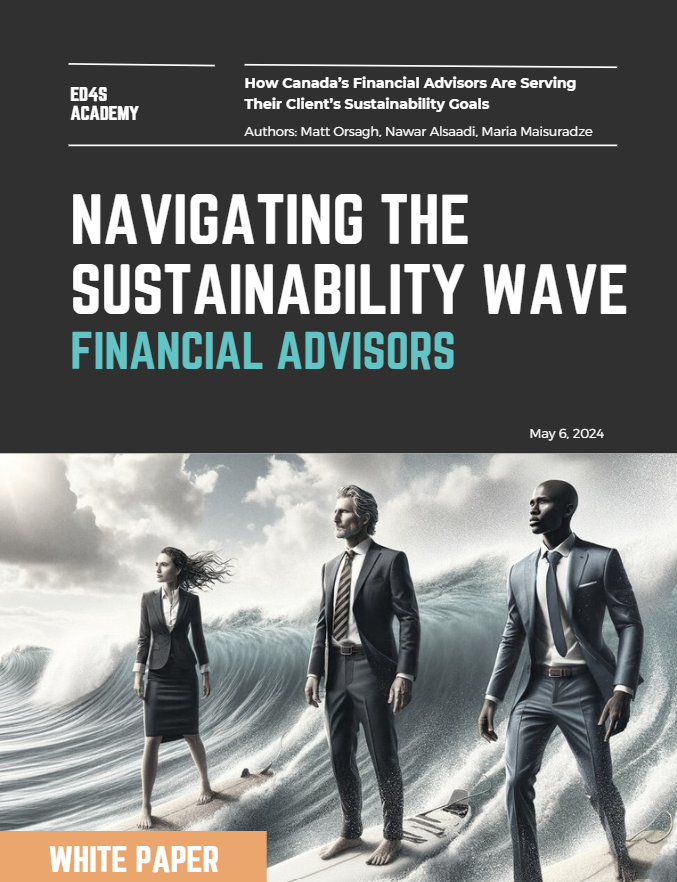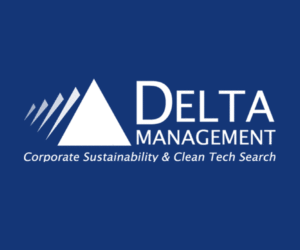Financing the Future: Turning Capital into Climate Solutions

Redirecting capital toward climate solutions starts with everyday financial choices. Maria Maisuradze, Founder and CEO at Education for Sustainability explains how asking the right questions about your bank, pension, or advisor can help drive demand for sustainable investing, hold institutions accountable, and reshape the financial sector’s role in decarbonizing the economy.
If you’re reading this article, chances are you’re already aware of and concerned about the state of our environment and its impact on society. Perhaps you’re recycling at home, volunteering for a local charity, or keeping up with news on climate change and its consequences. Yet, in the face of large, complex, and interconnected global systems, individual actions can sometimes feel insignificant. This feeling of powerlessness is familiar to many.
The Influence of Finance
But here’s the good news: you have more influence than you might think.
Let’s talk about finance. Finance and climate change are deeply interconnected. Capital flows determine which organizations thrive and which ones scale down. Clean technology and renewable energy require significant financing to grow. Meanwhile, large sums of capital continue to fund oil and gas developments in Canada. While this reality is disheartening, it’s also a reflection of our ongoing dependence on fossil fuels—our vehicles, home heating, and supply chains still rely heavily on them. Transitioning to cleaner alternatives takes time. Some companies will lead the way, while others will be left behind.
Finance and climate change are deeply interconnected. Capital flows determine which organizations thrive and which ones scale down.
– Marie Maisuradze
Data Is Power: The Rise of Sustainable Disclosure Standards
A positive shift is occurring in capital markets. We now have increased access to reliable, standardized data about companies’ environmental and social impacts. This progress is largely due to organizations like the International Sustainability Standards Board (ISSB), the Global Reporting Initiative (GRI), CDP, and the Corporate Sustainability Reporting Directive (CSRD) in Europe. As investment managers gain insights into the negative externalities that companies produce, they can design investment products aligned with specific environmental and social goals. They can also integrate sustainability data into their valuation models, leading to more informed investment decisions.
The Awareness Gap

Despite these advances, financial literacy about the impact of money remains low—even among finance professionals. Most people don’t realize that the choice of a bank, savings account, or pension fund can significantly shape our economy and society
Earlier this year, ED4S conducted interviews with 40 financial advisors across Canada. The results were telling. Most advisors never initiate conversations with clients about responsible investing or climate-focused investing. Why? Many believe that investors have no interest in such products—“No one is asking for it,” they claim. Others still hold the misconception that sustainable investing requires sacrificing financial returns.
Most people don’t realize that the choice of a bank, savings account, or pension fund can significantly shape our economy and society.
– Marie Maisuradze
Shifting the Market
This is where investors and consumers have the power to drive change. It’s as simple as asking the right questions to your bank and financial advisor. By showing interest in sustainable investing products and responsible banking, you signal market demand for more sustainable options.

There are over 20 financial instruments that incorporate sustainability considerations in one way or another. For example, more than USD $3.5 trillion in green bonds have been issued globally. The proceeds from these bonds finance energy transition projects, often delivering solid returns to investors. Additionally, the impact investing market has grown to over USD $1.5 trillion. These investments support companies and projects that generate both financial returns and measurable positive social and environmental impacts.
So, what’s the challenge? We have the capital and the financial instruments to address global challenges. What we lack is sufficient market demand to shift capital flows toward sustainable solutions.
The Role of Financial Institutions
The financial services industry’s biggest impact is not in its buildings or business travel—it’s in its investments and lending portfolios, particularly Scope 3, Category 15 emissions. This presents a significant opportunity for financial institutions to play a leading role in decarbonizing our economy.
What You Can Do
You have more power than you think. Here’s how you can make a difference:
- Talk to your financial advisor about sustainable investing options.
- Ask your bank if they’re still funding new fossil fuel projects and inquire about their transition plan.
- Discuss the impact of money with your friends and network.
Most of us have a bank account, a pension plan, or a credit card. Next time you speak with your financial advisor, ask how their institution is addressing climate risks and opportunities. Find out how you can align your finances with your values. Don’t be afraid to have informed conversations and act on the information you receive.
Five Key Sustainable Investing Strategies
There are five main strategies for sustainable investing, each with its own approach. Consider which one aligns with your values:
1. Screening
Excluding specific companies or sectors from your portfolio based on predefined criteria. For example, you might divest from companies that derive more than 10% of their revenue from coal mining, oil extraction, or natural gas production.
2. ESG Integration
Considering environmental, social, and governance (ESG) factors within the investment analysis and decision-making process to improve risk-adjusted returns. For example, recognizing that increased flooding could negatively impact real estate values in high-risk zones.
3. Thematic Investing
Selecting assets to capitalize on specific trends, such as renewable energy or social impact themes. For example, investing in clean technology companies.
4. Stewardship
Using investor rights and influence to protect and enhance long-term value for clients and beneficiaries. For example, an asset manager might ask an oil and gas company to link executive compensation to ESG performance metrics.
5. Impact Investing
Investing with the intention of generating a positive, measurable social and/or environmental impact alongside a financial return. For example, investing in a social enterprise that provides affordable solar energy solutions to rural communities, improving access to electricity while delivering competitive financial returns
Final Word: Influence the Infrastructure
Don’t feel the need to become an expert in all of these strategies. Your financial advisor should be prepared to guide you.
Financial institutions must be held accountable. They have a crucial role to play in decarbonizing our economy and financing climate solutions. If each of us speaks up, asks the right questions, and demands change, we can influence financial infrastructure. Together, we can redirect capital away from destructive industries and toward climate solutions.














